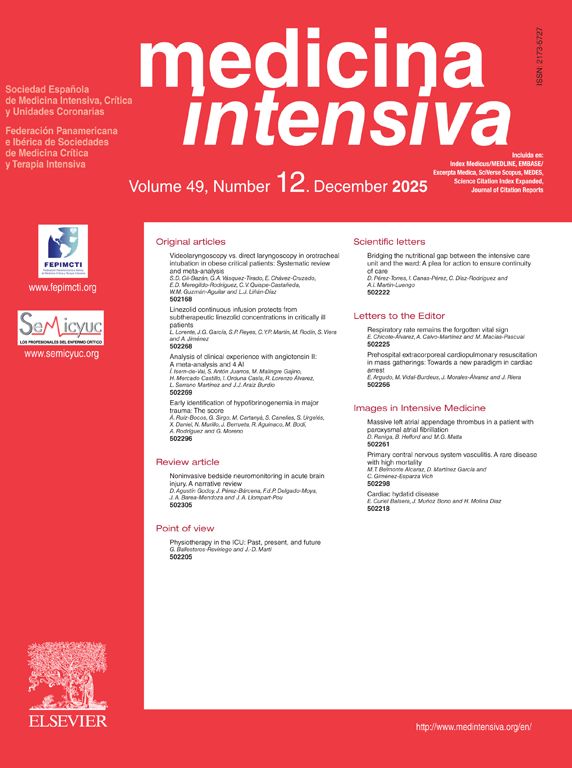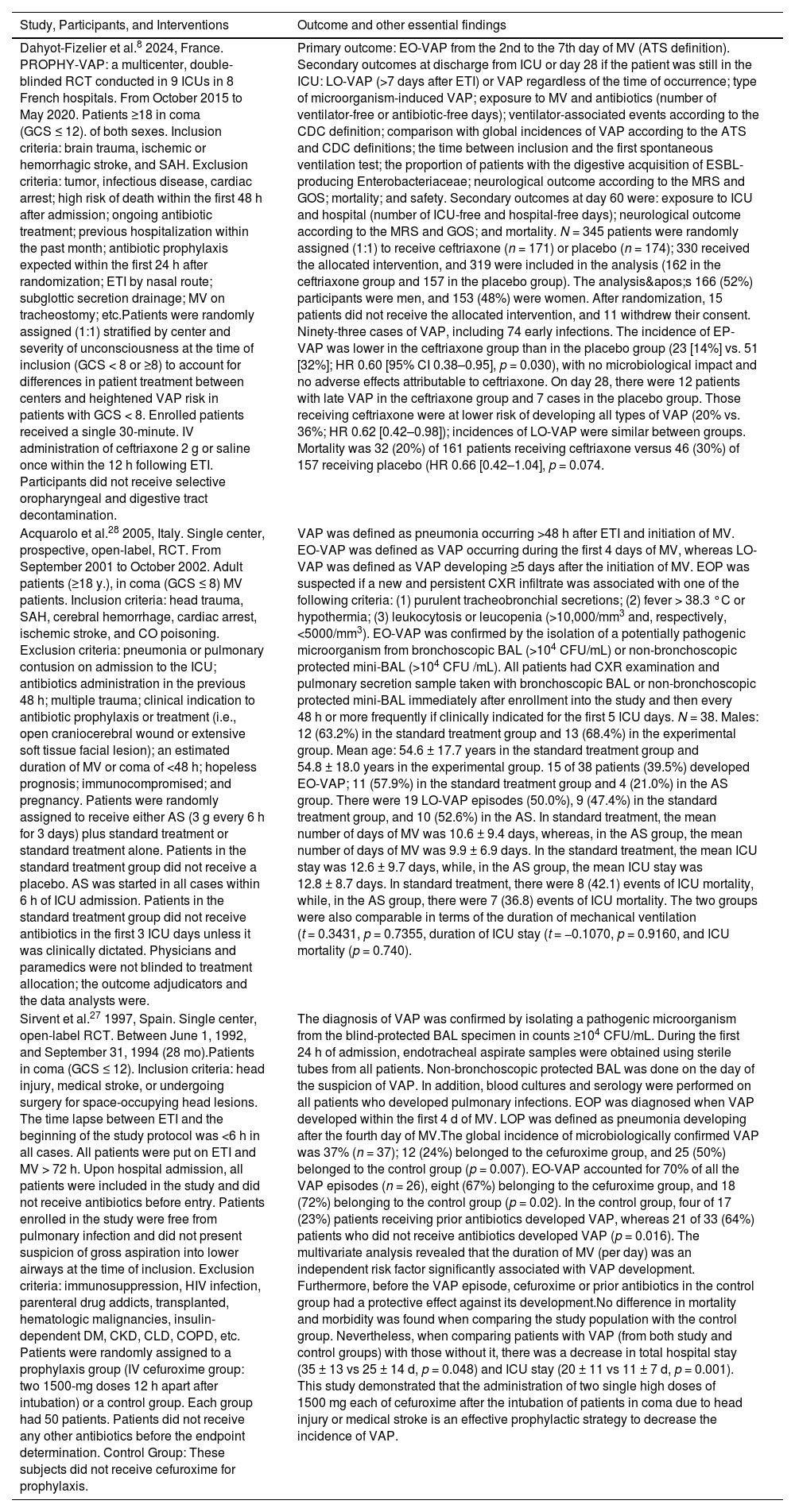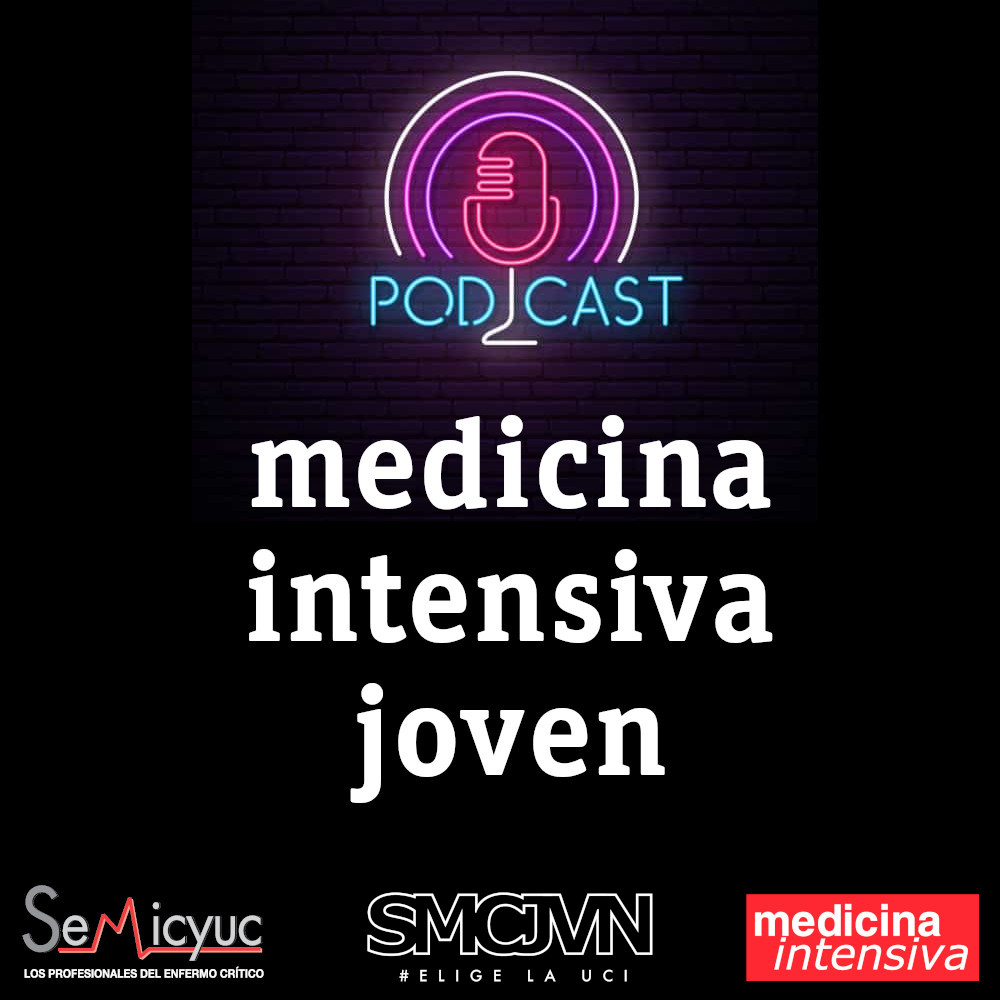To evaluate the effect of parenteral β-lactam antibiotics on outcomes related to ventilator-associated pneumonia (VAP) in adult patients in coma due to acute brain injury (ABI).
DesignSystematic review and meta-analysis.
SettingRandomized controlled trials (RCTs) published up toSeptember 30, 2024.
Patients or participantsAdult patients in coma due to ABI.
InterventionsParenteral β-lactam antibiotics.
Main variables of interestIncidence and outcomes related to VAP.
ResultsThree RCTs involving 483 patients met inclusion criteria; 231 patients received β-lactam prophylaxis. Among these, there were 115 cases of early-onset VAP (EO-VAP), 49 of late-onset VAP (LO-VAP), and 102 deaths. All studies were conducted in Europe. Causes of coma included trauma, stroke, and CO poisoning. Intravenous β-lactams (ampicillin/sulbactam, cefuroxime, and ceftriaxone) reduced EO-VAP risk by 57% (RR 0.43; 95% CI 0.30–0.61), and all-VAP by 35% (RR 0.65; 95% CI 0.53–0.80).
No impact was observed on LO-VAP (RR 0.95; 95% CI 0.54–1.67), 28-day mortality (RR 0.76; 95% CI 0.53–1.09), intubation duration (SMD -0.13; 95% CI −0.46–0.21), or ICU length of stay (SMD −0.22; 95% CI −0.55–0.12). Heterogeneity and the risk of bias were low, with high overall evidence certainty.
ConclusionsIn adult patients in coma due to ABI, intravenous β-lactam antibiotics reduce EO-VAP and all-VAP risk.
Evaluar el efecto de los antibióticos β-lactámicos parenterales en los resultados relacionados con la neumonía asociada a ventilación mecánica (NAV) en pacientes adultos en coma debido a lesión cerebral aguda (LCA).
DiseñoRevisión sistemática y metaanálisis.
ÁmbitoEnsayos controlados aleatorizados (ECA) publicados hasta el 30 de septiembre de 2024.
Pacientes o participantesPacientes adultos en coma debido a LCA.
IntervencionesAntibióticos β-lactámicos parenterales.
Variables de interésprincipalesIncidencia y desenlaces relacionados con la NAV.
ResultadosIncluimos tres ECA, 483 pacientes, de los cuales, 231 recibieron profilaxis con β-lactámicos. Hubo 115 casos de NAV de inicio temprano (NAV-IT), 49 de NAV de inicio tardío (NAV-ITD) y 102 muertes. Todos los estudios se realizaron en Europa. Las causas de coma incluyeron traumatismo, accidente cerebrovascular e intoxicación por CO. Los β-lactámicos intravenosos (ampicilina/sulbactam, cefuroxima y ceftriaxona) redujeron el riesgo de NAV-IT en un 57% (RR 0,43; IC 95% 0,30–0,61), y de NAV total en un 35% (RR 0,65; IC 95% 0,53–0,80).
No se observó impacto en NAV-ITD (RR 0,95; IC 95% 0,54–1,67), mortalidad a 28 días (RR 0,76; IC 95% 0,53–1,09), duración de la intubación (DMS -0,13; IC 95% -0,46–0,21) o estancia en UCI (DMS -0,22; IC 95% -0,55–0,12). La heterogeneidad y el riesgo de sesgo fueron bajos, con una alta certeza en la evidencia.
ConclusionesEn pacientes adultos en coma debido a LCA, los antibióticos β-lactámicos intravenosos reducen el riesgo de NAV-IT y de NAV total.
Article
Go to the members area of the website of the SEMICYUC (www.semicyuc.org )and click the link to the magazine.








